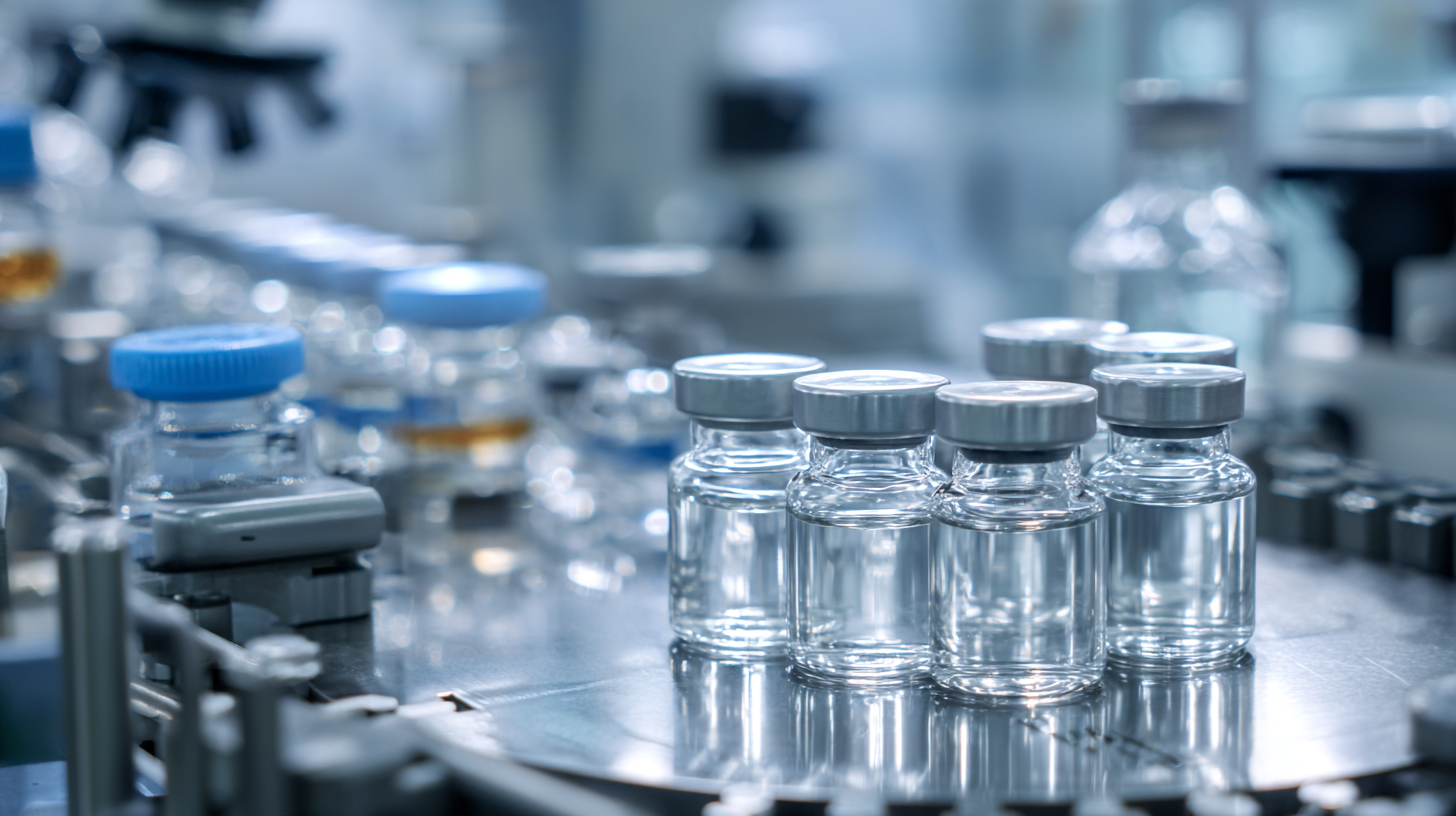In the rapidly evolving landscape of Pharmaceutical Manufacturing, ensuring compliance with global standards is more crucial than ever. According to a recent report by the International Federation of Pharmaceutical Manufacturers & Associations, the global pharmaceutical industry is projected to reach $1.57 trillion by 2024, highlighting the immense scale and complexity of manufacturing processes. This growth brings with it stringent regulatory requirements from various health authorities, such as the FDA and EMA, which play a pivotal role in maintaining product quality and safety. A failure to adhere to these standards not only jeopardizes patient health but can also lead to severe financial repercussions, as evidenced by the $1.9 billion in fines levied against pharmaceutical companies for compliance violations in 2021 alone. This comprehensive guide aims to navigate the intricate matrix of global regulations, providing manufacturers with essential insights and practical strategies to enhance quality compliance in their operations.

In the complex world of pharmaceutical manufacturing, adhering to global standards is crucial for ensuring product quality and compliance. Understanding these standards not only protects public health but also enhances a company’s reputation and marketability. Regulatory bodies like the FDA, EMA, and WHO have established guidelines that govern everything from raw material sourcing to final product testing. Familiarizing yourself with these frameworks allows manufacturers to navigate the compliance landscape effectively.
Tips for Compliance:

Effective quality management systems (QMS) are crucial for pharmaceutical manufacturers aiming to meet global standards and ensure product safety. A well-structured QMS encompasses several key components, including quality planning, quality control, and quality assurance. These elements must work together to facilitate compliance with regulatory requirements and enhance overall operational efficiency.
Tips for establishing a robust quality management system include: first, regularly perform risk assessments to identify potential vulnerabilities within your processes. This proactive approach allows for timely interventions and strengthens the overall integrity of your manufacturing practices. Second, foster a culture of continuous improvement by encouraging employee training and feedback. Empowering staff at all levels to contribute to quality initiatives can lead to innovative solutions and a more vigilant workforce.
Moreover, implementing a comprehensive documentation system is essential. Ensure that every process, from raw material sourcing to final product testing, is accurately recorded. This transparency not only supports adherence to regulations but also enhances traceability and accountability within the organization. By prioritizing these components, pharmaceutical manufacturers can navigate the complexities of global standards with confidence.

Non-compliance with global pharmaceutical standards can result in significant financial repercussions for manufacturers. From fines imposed by regulatory bodies to the costs associated with product recalls, the stakes are high. In addition to these immediate costs, non-compliance can erode a company's reputation and lead to a loss of business partnerships. Consequently, it is crucial for pharmaceutical manufacturers to prioritize adherence to quality standards to avoid such financial pitfalls.
Tips for ensuring compliance include regularly training staff on the latest regulations to maintain awareness of any changes. Establishing a robust quality management system can also facilitate ongoing compliance checks and audits. Furthermore, building strong relationships with regulatory agencies can provide valuable insights and guidance, helping firms navigate the complexities of global standards effectively.
Another tip is to invest in technology that enhances manufacturing processes and tracking systems. This can improve transparency and ensure that all operations meet regulatory requirements. By taking proactive measures to comply with quality standards, pharmaceutical manufacturers can save costs in the long run and maintain their market position.
| Compliance Area | Impact of Non-Compliance | Average Cost of Non-Compliance (USD) | Common Violations | Regulatory Authority |
|---|---|---|---|---|
| GMP Compliance | Product recalls, penalties, and legal action | 500,000 - 2,000,000 | Inadequate documentation, lack of training | FDA, EMA |
| Product Quality | Loss of market trust, decreased sales | 100,000 - 1,000,000 | Contaminated products, labeling errors | FDA, Health Canada |
| Environmental Compliance | Fines, remediation costs | 250,000 - 500,000 | Improper waste disposal, emissions violations | EPA, Local Authorities |
| Data Integrity | Legal sanctions, loss of certifications | 200,000 - 750,000 | Data manipulation, inadequate security | FDA, TGA |
The pharmaceutical manufacturing industry has increasingly prioritized quality compliance, with successful case studies illustrating the effective implementation of global standards. For instance, according to the International Society for Pharmaceutical Engineering (ISPE), organizations that adopt strict quality guidelines can see a 30% reduction in production-related issues. This adherence not only enhances product integrity but also builds consumer trust, which is essential in an industry where safety is paramount.
A notable example is the case of a multinational pharmaceutical company that integrated the ICH Q10 guidelines into its quality management systems. The company reported a 40% increase in operational efficiency and a significant decrease in time spent on regulatory submissions. This transformation was primarily due to a robust risk management process and continuous improvement initiatives that aligned with quality standards. Such implementations highlight how embracing global compliance standards can lead to substantial benefits, driving not only operational success but also fostering a culture of quality within organizations. By leveraging these strategies, the industry can not only meet regulatory expectations but surpass them, ultimately enhancing patient care worldwide.
After-sales support and maintenance are crucial elements in ensuring sustained compliance and quality in pharmaceutical manufacturing. After a product has reached the market, it is essential for manufacturers to provide ongoing support to address any potential issues and maintain optimal performance. This includes regular updates, troubleshooting assistance, and training for end-users. By fostering strong relationships with clients and offering timely support, companies can not only enhance product satisfaction but also ensure adherence to rigorous quality standards.
Additionally, implementing a proactive maintenance strategy is vital. This involves scheduled checks and routine inspections of manufacturing equipment to minimize downtime and prevent costly disruptions. Keeping accurate records of maintenance activities helps manufacturers comply with regulatory expectations and demonstrates a commitment to quality. Furthermore, engaging with stakeholders to gather feedback can provide insights into areas of improvement, ensuring that the manufacturing process evolves alongside the advancements in technology and regulations. By prioritizing after-sales support and maintenance, pharmaceutical manufacturers can secure their place at the forefront of the industry while consistently delivering high-quality products.